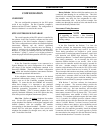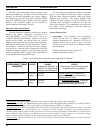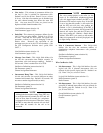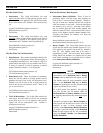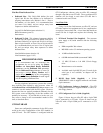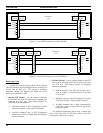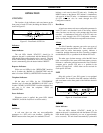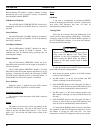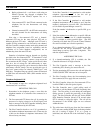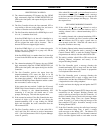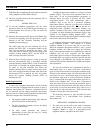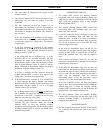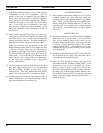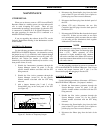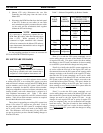
OPERATION LBI-39076
B
37
Backup
The IAM has the capacity to hold 60,000 records in
battery backed RAM. Every effort has been made to ensure
that this memory won’t be corrupted in normal operation.
However, one must not forget about the possibly of
component failure in the IAM, or more likely an external
influence (such as a lightning strike, technical error, etc.)
that could cause the loss of records stored in the IAM.
Therefore, you should download the billing data often and
backup the data then stored in the office PC to ensure that, if
an accident occurs, the loss of data (potential revenue) will
be minimized.
As the operation of the IAM is autonomous, the ELI
system will continue to process telephone calls, even if the
IAM has failed, the IAM memory is full, or the IAM is
disconnected from the PCM/Data bus. There is an option in
the GTI Configurator that will halt the call processing if
there is a bus failure (between units). Because the standard
placement of the IAM is at one end of the bus, it is possible
that there won’t be any indication to users of the system if
the IAM is not able to store Call Detail Records.
However, the IAM has alarm outputs that can be used to
notify the user of a memory or bus problem that may result
in the loss of billing data (see the subsequent section on
alarm outputs). Also, the printer can be used for a hard copy
backup of the raw Call Detail Records. The data to the
printer can be turned on and off with DIP switch section 5.
Up is on and down is off. Do not reset the IAM for this
section of the DIP switch.
Status
The status of the IAM can be read by using the GTI
Configurator software. The GTI Configurator software will
show if an IAM is present, the number of call records
presently stored, the amount of memory free and memory
used, any alarm conditions, etc. See the GTI Configurator
software user’s guide for more information about accessing
the IAM for status messages.
Alarms
As described in the installation section, three open drain
alarm outputs are provided to alert external equipment in
case of problems. Because the IAM does not immediately
affect other devices, its operation (or lack of operation) is
not immediately obvious, unless someone at the site
observes the front panel LEDs, the status of the IAM is read
via the GTI Configurator software, or these alarm outputs
are monitored.
Alarm 1 - CDR Full or Memory Error - indicates that
the CDR buffer is full or a memory error has occurred. In
either case, one should access the site (using the GTI
Configurator), read the status of the IAM, and download the
Call Detail Records (if possible).
Alarm 2 - Bus Failure - is sent if there is a PCM/DATA
bus failure and the IAM can’t communicate with the GTI
units to receive billing data.
Alarm 3 - Low Battery - is active if the battery backup
for RAM is low and should be replaced. (This condition
will only be detected during power-up after an extended
outage.)
It should be noted that these alarm outputs will go
through indeterminate states during IAM power-up or reset.
It is recommended that the normally-closed output option be
selected (see DIP Switch Settings), so that the presence of
individual alarms will indicate the intended alarms, and the
presence of all alarms will indicate that the IAM has lost
power.
INTERCONNECT CALLS
Overview
The operation of the Enhanced Local Interconnect
(ELI) system is controlled by the Site Controller computer.
The Site Controller computer makes radio channel and
telephone line assignments, based on availability, and the
constraints of its active database configuration. For a site
that is not connected to a System Manager, the active
database configuration is nothing more than what has been
programmed into the Site Controller computer's Personality
PROMs. For a site that is connected to a System Manager,
the active database configuration is the latest site database
received from the System Manager.
The Site Controller computer supervises the GTI units
by sending and receiving messages over two 19.2 Kbaud
serial data links to the Master GTI. (All messages between
the Site Controller computer and individual GTI units must
first go through the Master GTI.) Message bytes are made
up of 8 data bits, 1 stop bit, and no parity bit.
The following terms are used to simplify the
descriptions in this section:
• Telephone-originated call - a call from a telephone,
through a telephone line connected to an EDACS
repeater site, to one or more radios using that
EDACS repeater site.



